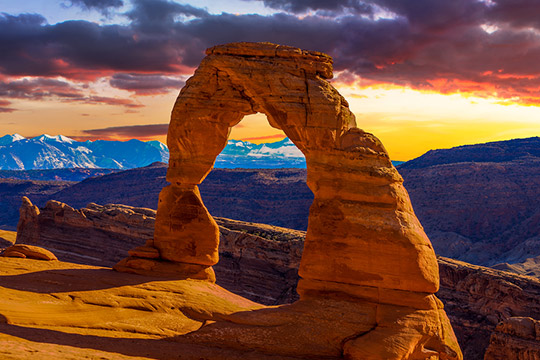Weathering and Erosion
One fascinating thing from weathering and erosion is the formation of natural arch.

One fascinating thing from weathering and erosion is the formation of natural arch.

| Word | Definition |
|---|---|
| Weathering | the breaking down of rocks. |
| Physical weathering | breaks down of rocks into smaller rocks. |
| Chemical weathering | changes a rock into different substance which is usually a weaker material. |
| Soil | is a mixture of weathered rocks and humus. |
| Humus | is the decomposed remains of dead plants and animals. |
| Erosion | the transportation of rocks and sediments by river, wind, glacier and force of gravity. |
| Mass movement | the moving of sediments and rocks by gravity. |
| Agents of erosion | the substances that move rocks and sediments. Examples are water, wind, ice. |
| Glacier | a large block of ice that move by gravity. |
| Deposition | the settling of sediments that were carried by agents of erosion. |
| Sorting | the separation of sediments by their size. |
| Dunes | hills of sand formed as a result of the erosion and deposition of sand by wind. |
| Dynamic Equilibrium | the rate of deposition is equal to the rate of erosion. |
| Watershed | is also called water basin. Watershed is an area where smaller rivers all flow into a larger river. |
| Meander | is the wandering of a river. |
| Discharge | is the amount of water flowing in a stream. |
| Drainage pattern | shows the path rivers flow in an area. |
| Runoff | is the flow of water downhill on a surface due to gravity. |
| Permeability | is a measure of how easily water flows through a substance. |
| Porosity | is the amount of empty space in a substance. |
| Capillarity | water goes up in a thin, narrow tube. |
| Striations | the parallel scratch marks left behind by glaciers dragging loose sediments against the surface of a bedrock . |
| Moraines | the large amount of rocks left behind by a glacier (glacial deposition). |
Deposition within a meandering stream usually
occurs on the inside of the curves because the
(1) water velocity decreases
(2) stream gradient increases
(3) water is deeper
(4) stream is narrower